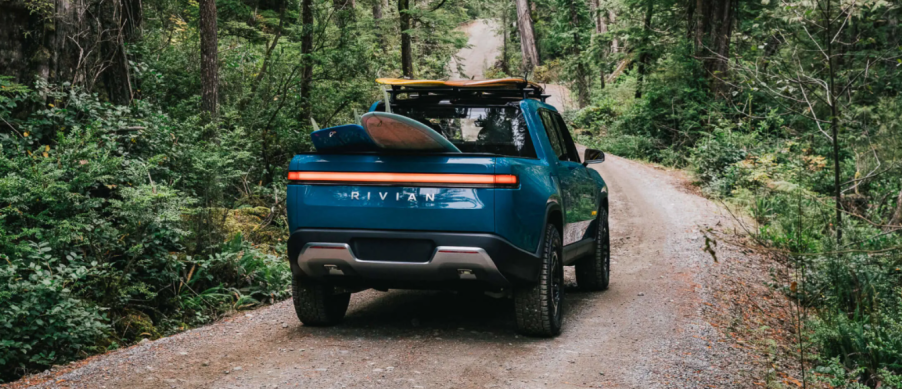
Rivian Stole Jeep’s Thunder by Actually Producing a Vehicle That Does a Tank Turn, but Jeep Did It First
Rivian is making a big splash in the EV industry with its SUV and truck models, but those aren’t the only things drawing customers to Rivian. That’s because Rivian’s cars come with some cool and innovative new tech, and it’s simply quite impressive. With that being said, as it turns out, Rivian’s Tank Turn tech is not actually that new, and Jeep did it first.
Rivian’s Tank Turn technology

One of the main themes that Rivian seems to be driving home is just how outdoorsy its cars are. Whether it’s the R1T truck or the R1S SUV, Rivian’s upcoming vehicles seem to be able to handle going off-road. This is especially true given that they are both going to be equipped with Tank Turn technology. As its name implies, Tank Turn will allow the Rivian car to turn around as a tank would.
Tank Turn is possible primarily because the R1T and the R1S both have four electric motors, and they all can control a wheel. Tank Turn allows Rivians to be more maneuverable when off-roading, but it doesn’t have much use elsewhere. After all, the Tank Turn feature doesn’t work well on regular roads or pavement.
Jeep did it before Rivian, though
That being said, Jeep created a concept car in 2005 that did precisely that, according to Hemmings. It was called the Jeep Hurricane, and it wasn’t an EV. However, like those two Rivians, the Hurricane could turn like a tank. Jeep went about it differently, however. To do the tank turn, the Hurricane got a pretty advanced steering system.
Hemmings said that the Hurricane had a “steer-by-wire system” that allowed it to steer each wheel in different directions. This allowed the Hurricane to do a crab walk, much like the GMC Hummer EV can do, as well as a tank turn. That said, there is a crucial difference between the Jeep and the Rivian. The Jeep had independent drive shafts, which allowed the Hurricane to have downward rotational force when it was tank turning.
This ultimately means that, unlike the Rivian, the Hurricane could do a tank turn on regular roads. If a Rivian tried to do a tank turn on regular roads, it would break a lot of stuff. However, while Jeep created a car capable of the tank turn before Rivian was founded, Rivian did something Jeep couldn’t do. Rivian made a production car that could turn like a tank.
The Jeep Hurricane concept cost $2 million
Ultimately, as advanced as the Jeep Hurricane was, it simply never went from concept to production. This was mainly because the Hurricane was never meant for production. After all, those high-tech features were never going to be cheap in 2005, so it’s pretty apparent that Jeep was only trying to see how good of a car its engineers could make.
As it turns out, those engineers designed a Jeep that cost about $2 million. That’s a lot of money, and very few Jeep fans could ever hope of affording that. However, if they could, they would’ve gotten their hands on a pretty good Jeep overall. Not only could it do some advanced steering, but it was simply very powerful, at least for the time.
The Hurricane had two 5.7-liter V8 engines, and combined, they produced 670 horsepower and 740 lb-ft of torque. Plus, it had features that were more common in sports cars. For example, Jeep used quite a bit of carbon fiber on the Hurricane. As such, the Hurricane could go from 0 to 60 mph in just 4.9 seconds.


